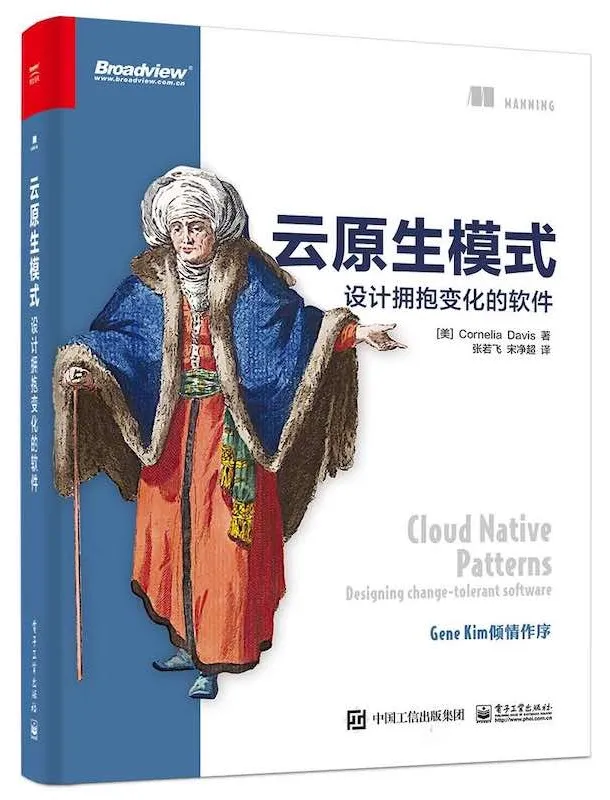“Cloud Native Patterns,” authored by Cornelia Davis, translated by Zhang Ruofei and Song Jingchao, published by Publishing House of Electronics Industry in August 2020.

What exactly are we talking about when we discuss cloud-native? I’ve been pondering this question for years, and perspectives may vary. Since translating the first book on cloud-native three years ago, I’ve been involved in translating and creating a series of works on cloud-native. Through participation in and observation of open-source projects, communities, foundations, and the process of application cloudification in the cloud-native field, I’ve come to the conclusion: cloud-native is a way of behavior and design philosophy. Essentially, any behavior or method that can improve resource utilization and application delivery efficiency in the cloud is cloud-native. The history of cloud computing is a history of cloud-native transformation. Cloud-native is the inevitable result of cloud computing adapting to social division of labor, entrusting system resources, underlying infrastructure, and application orchestration to cloud platforms, allowing developers to focus on business logic. Isn’t this what cloud computing has been striving for all along? Cloud-native applications pursue the rapid construction of highly fault-tolerant, elastic distributed applications, striving for the ultimate development efficiency and friendly online and operational experience. With the concept of cloud-native, born to be deployed in the cloud, they can maximize the dividends brought by cloud computing.
Before this, I translated several books on cloud-native topics, including “Cloud Native Go” by Kevin Hoffman and “Cloud Native Java” by Josh Long. They both come from Pivotal or have worked at Pivotal for many years. When I saw this book, I was surprised to find that the author, Cornelia Davis, also comes from this company. Pivotal is truly the cradle of cloud-native. The content of this book is different from previous cloud-native books, innovatively organizing patterns, so I immediately contacted Zhang Chunyu, the editor of Publishing House of Electronics Industry. He informed me that Zhang Ruofei was translating this book. Previously, I had cooperated with him to translate “Cloud Native Java.” This book is our second collaboration, and I truly admire his accuracy and efficiency in translating books. We each translated half of the content of this book.
Everyone is discussing cloud-native, but how to implement it is still a matter of debate. This book lists 12 patterns for building cloud-native applications, mainly focusing on data, services, and interactions of cloud-native applications, namely, design patterns at the application level. These patterns are interspersed throughout the chapters of the second part of this book, covering various aspects of cloud-native applications, and combining theory with practice, guiding readers to implement a cloud-native application using Java.
I also want to express my gratitude to the members and volunteers of the Cloud Native Community for their contributions to the development of cloud-native in China. Your encouragement and support are the driving force behind continuous efforts and exploration in the field of cloud-native. There may be some omissions in the translation process of this book, and I hope readers can point them out.